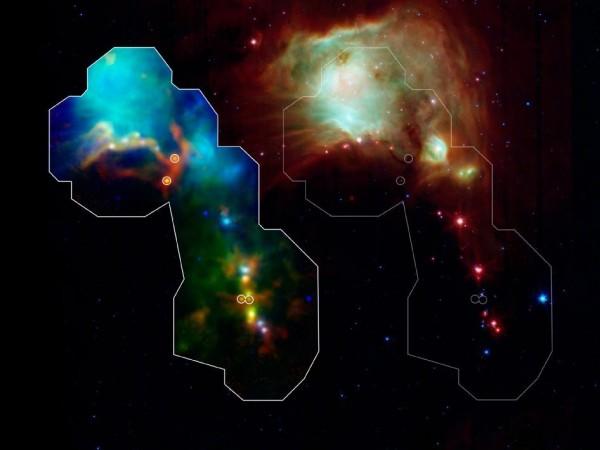
NASA on Tuesday reported that the Herschel Telescope has successfully captured images of the youngest stars ever recorded.
The Herschel Space Observatory of the European Space Agency (ESA) revealed images of 15 new protostars or young stars.
"Herschel has revealed the largest ensemble of such young stars in a single star-forming region," said Amelia Stutz, a postdoctoral researcher at the Max Planck Institute for Astronomy in Heidelberg, Germany.
Herschel discovered the protostars by surprise in the Orion constellation - the largest stellar site formation of our solar system.
The telescope detected the protostars using far-infrared-light to make them visible through dense clouds surrounding them. The clouds block out high energy including the light visible to our eyes.
Elise Furlan postdoctoral research associate at the National Optical Astronomy Observatory said, "Our observations provide a first glimpse at protostars that have just begun to 'glow' at far-infrared wavelengths".
Of the 15 protostars, 11 appear red indicating a low energy output. This means the stars are very young and are still in gaseous form.
"These sources may be able to help us better understand how the process of star formation proceeds at the very earliest stages, when most of the stellar mass is built up and physical conditions are hardest to observe," said Stutz added.
Researchers believe that the discovery will help them observe the development of stars from early phases to the stage when planets are formed.
NASA's Spitzer Space Telescope and the Atacama Pathfinder Experiment (APEX) telescope in Chile also contributed to Herschel's findings.
Herschel is the largest and costliest infra-red telescope ever to be sent in space. ESA sent it to space on a $1.4 billion mission in 2009.









